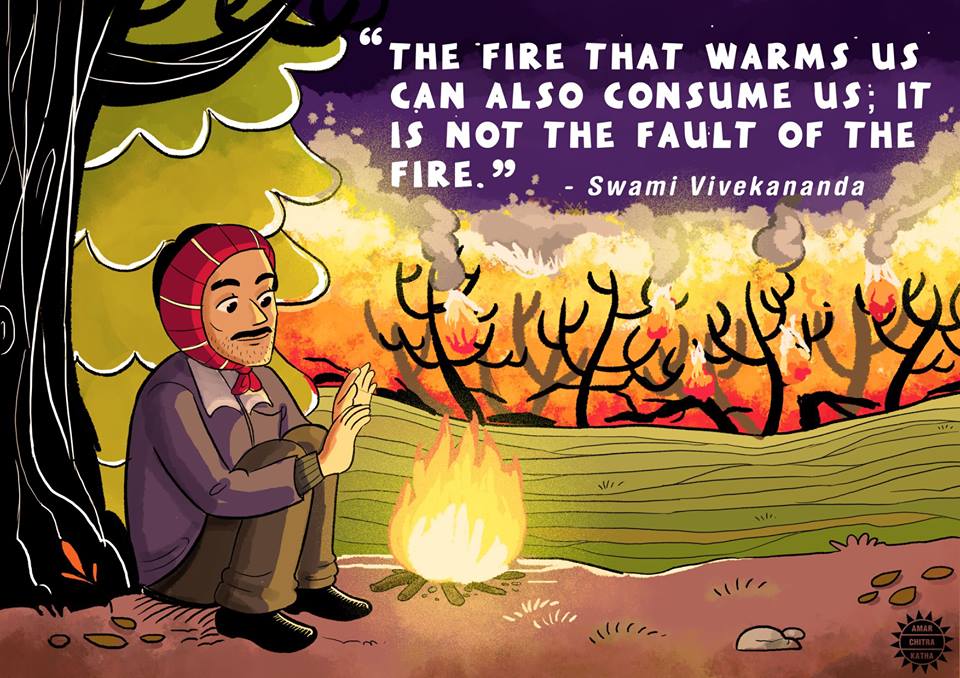Sage Bhuti swas the ever-angry disciple of Angirasa Muni who was dreaded by even Devas. Surya
Deva desisted from being too hot in his Ashram, and Vayu, Varuna and Chandra could ill-afford to
display their extreme features. The Muni had no children and perhaps that was the cause of his
frustration and temper. The responsibility of managing the affairs of the Sage’s Ashram was entrusted
to one of his disciples named Shanti. Bhuti gave a special instruction to Shanti that there should be
‘Nityagni’ the Constant Fire in the Homa Kunda or the Fire-Pit. Shanti once went out to fetch
‘Samidhas’or twigs for the Homas as also flowers, fruits and other material for the Ashram, he
returned late to the Ashram and to his utter dismay, the Nityagni was put off. Fortunately, Sage Bhuti
was out to perform a Yagna to his elder brother’s Ashram as the latter too did not have a child. Shanti
then prayed to Agni Deva without food for a week and the latter gave his appearance being pleased by
his Stotras. Agni Deva was instantly materialised as ‘Nityaagni’ and he asked Shanti to choose any
boon of his wish; Shanti requested for an illustrious son to his Guru. Agni was pleased with the
selflessness of Shanti and granted the wish to bestow a glorious son to the Muni who would be a
future Manu called Bhoutya; Agni also granted higher Lokas to Shanti.
https://www.youtube.com/results?q=Nithya+Agni
http://deathconqueror.blogspot.com/search/label/Purana
https://www.youtube.com/results?q=Nithya+Agni
http://deathconqueror.blogspot.com/search/label/Purana

